In a breeder’s lab, a team of specialists is constantly researching and making new developments to create new and improved varieties of roses to keep surprising the world with unique flowers.
Virgin Farms had the chance to visit the De Ruiter company, located in Tabacundo, Ecuador, a region that thanks to its geographical location produces roses that stand out because of their quality and variety.
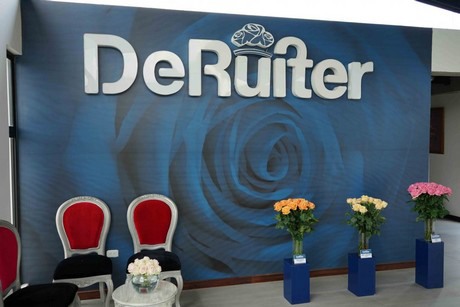
De Ruiter Flowers
De Ruiter is one of the world’s most important rose breeders. Their headquarters is located in the Netherlands, and they have offices in Africa, Colombia, Ecuador, and Russia. They have been in the floricultural Ecuadorian market for 30 years.
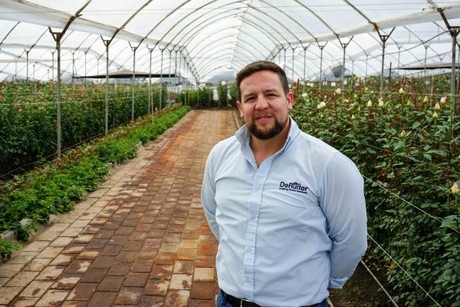
Juan Pablo Rengifo - Sales manager - De Ruiter Ecuador
Currently, there are at least 20 breeding companies, most of which are located in Holland, Germany, and other European countries. In Ecuador, breeders became prominent at the same time floriculture began about 50 years ago. These companies are the ones that deliver flowers to all new flower growers, and they are responsible for creating new floral varieties.
How do you obtain a breed?
The process to obtain new rose varieties takes around 3 to 5 years. Depending on the complexity of the variety that a breeder is trying to achieve, sometimes it can take up to 8 years to acquire. That is the reason varieties are so expensive—costing thousands of dollars.
At De Ruiter, the process begins in their labs in Holland, where experienced scientists using genetic-crossing, cross-pollinate two parent plants, meaning one female and one male, and after extensive research, observation, and trials, they achieve new varieties.
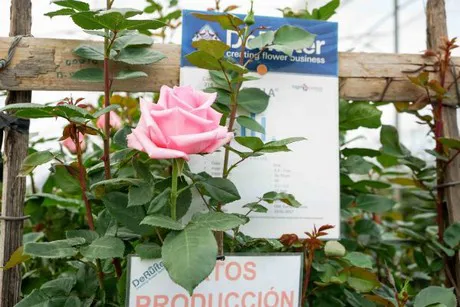
Quality check of new breeds not introduced to the market yet
Once the trials are over, they check if the color and size of the roses are adequate. Depending on these factors, a decision is made as to whether or not the new variety is going to be reproduced. When the plant is approved it is sent to the Ecuadorian breeders. In the beginning, they receive around 4 to 6 plants of each code and begin a trial phase. Depending on a plant’s productive, physiological and morphological characteristics, they thoroughly analyze the Ecuadorian farmlands. If the results are favorable for cultivation, they produce an average of 500 plants of that variety.
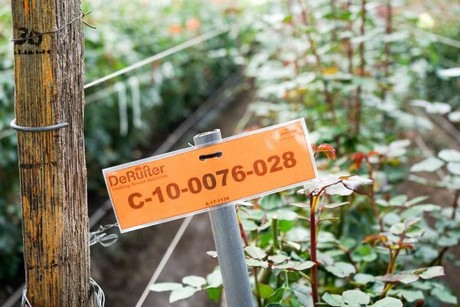
New rose breeds for pink flowers
De Ruiter in Ecuador has a 1.5-hectare land. Inside this space, 25% of the land is reserved to receive new varieties and test new codes. Another 25% is used for a genetic bank where the plants are cultivated, and the other 25% of the land is used to develop samples to send to Ecuadorian, American, Asian and European buyers. The rest of the plantation cultivates the rose plants that will be delivered to their end clients. “The breeder’s objective is to provide new and improved varieties for the lands, flowers showing great performance and varieties that adapt to different climates. It is a tool to provide each land with exclusive varieties and to achieve a better standing on the market,” commented Rengifo.
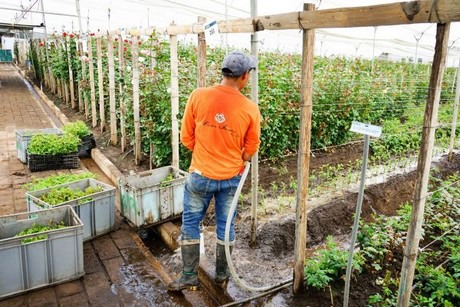
Irrigating the new varieties
Endless varieties
Each variety created by this company is registered and turned into intellectual property. For this reason, flower growers acquiring these plants from De Ruiter need to pay royalties to produce the product and to sell the rose varieties the company offers.
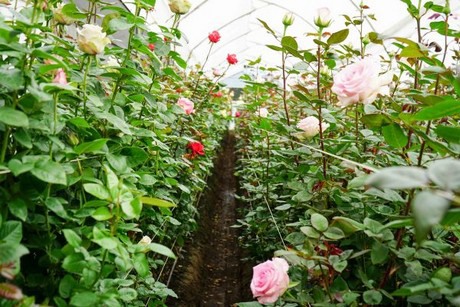
New rose varieties
In the years De Ruiter has been in the floricultural industry, at least 100 rose varieties have been registered. Each year they evaluate on average between 3,000 and 4,000 varieties of roses, and just 3 to 7 are released to the market per year. In 2019, they released 42 varieties including Pink Expression and Latte Coffee.
Among these varieties, there are many color variations such as latte coffee, yellow, orange, and a blend of brown and lavender.
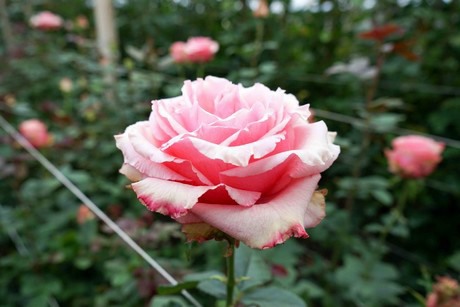
What is trending in the floral industry?
There are many trends in the world of flowers. During Valentine’s Day, red and pink roses are the most popular. During Mother’s Day, pastel-colored roses are in demand. This year, the protagonists are roses with vintage brown, purple, pink and orange tones. That is why in order to fulfill the demand, De Ruiter travels around the world looking for the latest trends, analyzing the market preferences to create new varieties to please their clients.
For more information: Virgin Farms
Virgin Farms
1-888-548-ROSE (7673)
www.virginfarms.com
